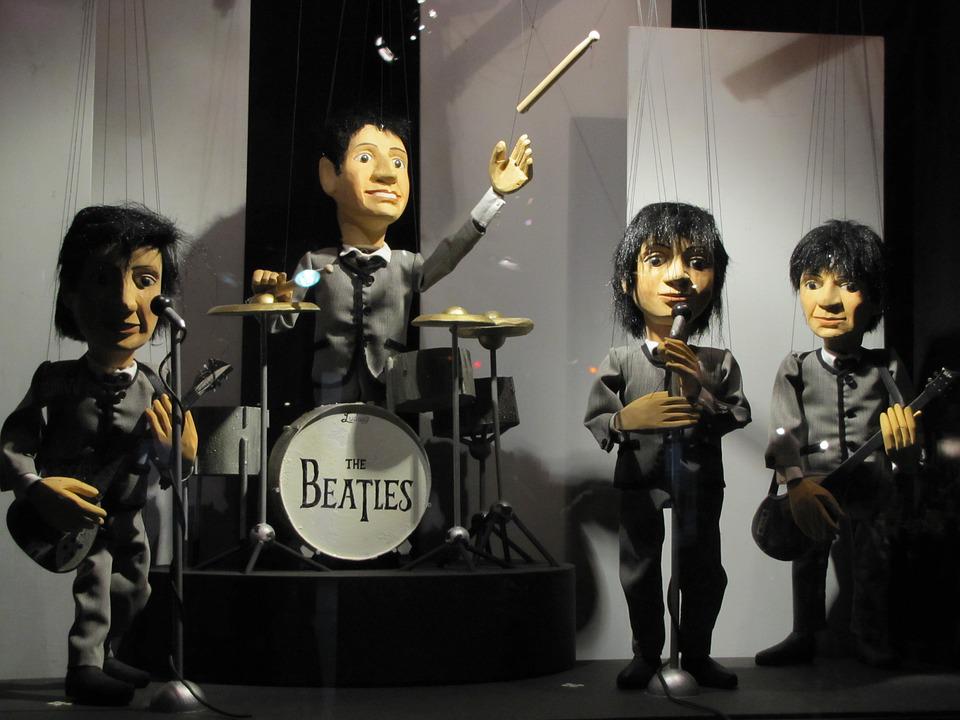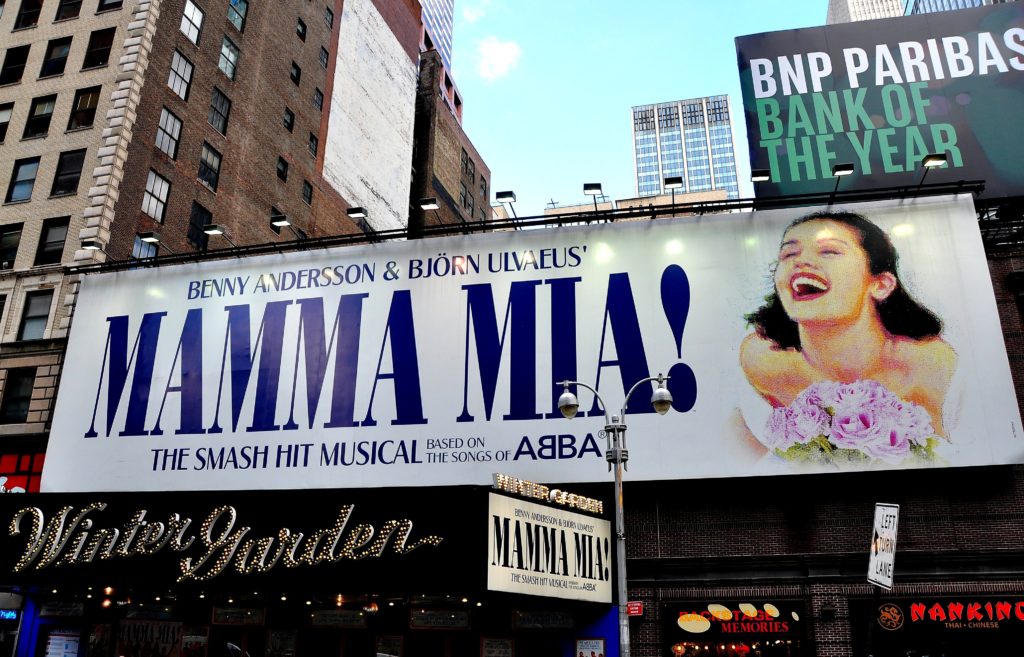
From the moment I started entertaining the idea of a format comprised of old rock songs from the Beatles to U2, I have faced skepticism and doubt about Classic Rock’s efficacy and sustainability. Radio people are just like that. Come to think about it, the record community wasn’t thrilled about it either, but that’s another story for another day.
Everyone wants a new format that is scalable – in other words, it can be successful in pretty much any market in the country, and doesn’t cost a fortune to launch and maintain. But when those new formats come along, most radio observers and pundits get cynical and even skeptical.
It usually starts with “It’ll never work.”
Then when the new format pops a good number, it’s “Well, it looks like a one-book wonder.”
When it actually looks to be successful, it’s “Well, that’s Detroit – let’s see it work out west, down south, or in the east.”
And finally, when the format looks to be a multi-market hit, it’s the worst forecast of them all:
“But will it last?”
As we’ve learned over the past 37 years, Classic Rock is here to stay. You’ve seen the data from Nielsen, as well as in research you’ve no doubt experienced in one market or another. This is a body of music – and more important, a collective experience – that like the music, stands the test of time. In yesterday’s blog post, we saw the data – Classic Rock concert tickets are the priciest of every music genre. There’s a lot to be said for gold.
But like most formats, there’s a certain fragility to Classic Rock. The audience is in a constant state of “aging out.” And while we’ve seen encouraging signs younger people – born long after the Doors, Queen, and Def Leppard first hit the music scene – embrace this music as much as their parents (and grandparents). That odd demographic reversal of fortune has kept many Classic Rock stations highly-ranked in the all-important radio demographic: 25-54 year-old adults.
 But there’s a hazard on the Classic Rock road ahead. Namely mortality.
But there’s a hazard on the Classic Rock road ahead. Namely mortality.
Many of the format’s standard bearers are on “the 8th floor” – well into their seventies, if not older. Many others died too young, or have passed away in recent years, leaving fans to enjoy their recorded music, while they learn to live without the joy and energy of live performances. Fans rue the fact they never saw David Bowie, Tom Petty, or Eddie Van Halen in concert.
To a great degree, this explains the success of all those amazing cover bands, carrying on the tradition of their namesakes. For many fans, this is how they’ll be able to see a facsimile of the Beatles, the Monkees, and even bands like Pink Floyd, the subject of yesterday’s JacoBLOG post.
Cover bands aren’t new. In fact, they’ve been around for centuries. We call them symphony orchestras, and they “cover” the Mt. Rushmore composers of Classical music – Beethoven, Mozart, Shubert, and Liszt.
But what if there was a way to experience the masters, whether they’re live, dead, incapacitated, or otherwise not touring? And what if we could see them in their prime – long before they turned gray or could no longer prance all over the stage?
Up to this point, holograms have been the go-to technology. Tours approved by the estates of Roy Orbison and Ronnie James Dio have been tried with mixed results. I blogged about how these concerts have both excited audiences and also disgusted them in a post titled “Would You Pay To See A Classic Rock Hologram In Concert?” back in 2018.

But its four years later, and innovation leads the way. And the band that’s playing the role of virtual canary in the coalmine is none other than that Swedish quartet ABBA.
For all you cynical rockers reading this (and I normally count myself as a card-carrying member of that group), let’s not forget that Agnetha Fältskog, Björn Ulvaeus, Benny Andersson, and Anni-Frid Lyngstad have made musical performance history.
 ABBA is credited with the invention of the “jukebox musical,” where there are songs are embedded in a fresh story line. “Mama Mia!” was a smash on Broadway, spawning two mega-hit movies for a franchise that remains highly popular.
ABBA is credited with the invention of the “jukebox musical,” where there are songs are embedded in a fresh story line. “Mama Mia!” was a smash on Broadway, spawning two mega-hit movies for a franchise that remains highly popular.
Now, a story in TimeOut – “How ABBA’s 2022 virtual concerts could change the face of live music” – tells the story of how the band is deep into virtual succession planning. The subtitle no doubt grabbed the attention of aging rockers, like Mick & Keith, Pete & Roger, and Sirs Paul and Elton, to name a few;
“Will this exciting digital technology allow musical icons to live forever?”
The story by Alim Kheraj goes into a “ABBA Voyage,” a new tour that launched last month – without the actual foursome being present. And here’s the kicker, using ABBATARS (yes, their name for avatars) the quartet will appeal in their 1970’s prime. (Ironically, they are, in actuality, all in their seventies.)
Here’s a snippet of “SOS” posted two days ago. (I believe the crowd is real.)
As you might suspect, “ABBA Voyage” is a major production, in partnership with visual effects company launched by none other than George Lucas.
The director of the show is Baillie Walsh, who worked closely with the band for five weeks, during which time they performed and recorded the entire show using 160 cameras for motion capture.
The show has its own residency at the band’s own venue, the ABBA Theatre in London. Tickets – by the standards mentioned in yesterday’s post about rising prices – are reasonable (see below). In U.S. dollars that’s about $26 on the floor, and from $180 for the “dance booths” (which most JacoBLOG readers would no doubt prefer).

What this portends for the future of the touring experience for Classic Rockers long in the tooth – or no longer with us – is still an unknown. Technology will undoubtedly create more opportunities, and ostensibly better experiences. I would expect to see more of this technology at CES shows in the future.
The question is whether fans will continue to shell out cash to see a facsimile of their all-time favorite artists.
I’m betting they will. In fact, these shows – or variations of them – may end up being more popular with generations that never experienced these artists in real time, but want to enjoy their music, their visuals, their stagecraft, and their artistry.
The shows may be virtual, but the box office is real.
Mama mia!
To access yesterday’s blog post – “We’re #1 (In The Price Of Concert Tickets” – click here.
- Why “Dance With Those Who Brung You” Should Be Radio’s Operating Philosophy In 2025 - April 29, 2025
- The Exponential Value of Nurturing Radio Superfans - April 28, 2025
- What To Do If Your Radio Station Goes Through A Midlife Crisis - April 25, 2025




I’m guessing this will be a much bigger hit with the younger generation, who never got a chance to see these superstars.
But I love the idea, just to keep the music alive!
It’s fascinating, right?
Rod Stewart at The Santa Barbara Bowl next month, mid-priced seats, $600.00. Down in front $1,000 plus, it’s close to sold out. I saw him in his prime in the 70s, with Britt Ecklund standing in the wings in a floor-length black fur coat.
Hey, Robert, as many have already noted, ticket prices are in the ear of the beholder. If someone wants to see an act badly enough, out comes the VISA car.
Hah! Back in the day, Bill Graham charged $3.50 for a ticket to Fillmore West or Winterland, which seemed only a little steep at the time. And the music was fresh!
Do you think they’ll sell DVDs of successful “shows” afterwards? I can replicate the experience just fine in my own lounge with a 5.1 surround system.
The times, they are a’ changin, John. Thanks for continuing the conversation.
People with “nosebleed” tickets, distant from the stage, in the back of the venue, are already accustomed to watching the live performance on massive video screens – instead of watching the actual performer.
Good point. Funny you mention the propensity to watch a concert on the big screen (TV). I find myself doing that at shows, even when I have good seats. Thanks for the comment.
Couple thoughts. I watched the clip but I’m not sure what I saw. If it’s not a hologram…and it’s not a video…what is it?
Other thought is how the sight and sound of our entertainments systems have gotten so vastly amazing that, I think, it’s going to continue to get harder and harder to get people to shell out large amounts of money for something that might be much more enjoyable–and much more cheaper–at home. Granted, there’s nothing like being at a live NFL game. But there’s also nothing like watching that same game from your favorite chair on a huge-screen TV with slo-mo replays from dozens of angles and easy access to a bathroom and full refrigerator, all without hours of traffic jams and $50 parking spaces.
I guess time and the ever-present laws of supply and demand will tell whether this will work or not.
Of course as you pointed out, “cover bands” have been around for hundreds of years performing classical music. If the same holds true for rock and roll, we might all one day be singing, “Roll over, McCartney, and tell Mick Jagger the news.”
Great comment, David. Another commenter talked about how those in mediocre seats end up watching the concert on the big screens anyway. At least at home, the popcorn is cheap and the beer is much lower priced. And yes, the bathroom situation.